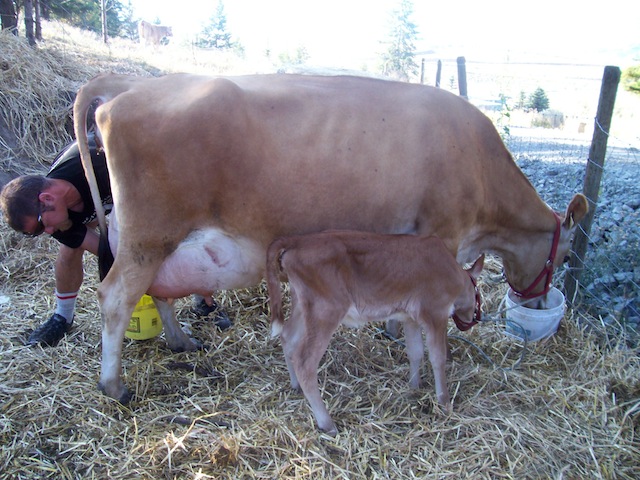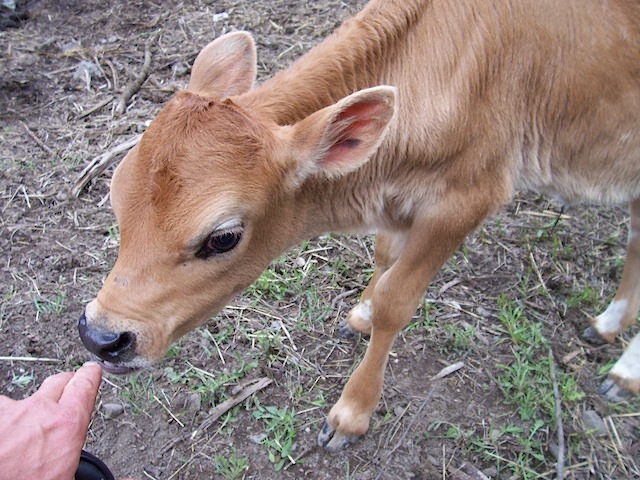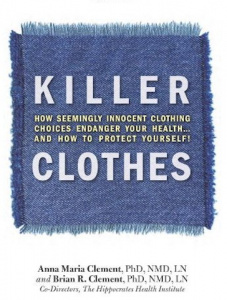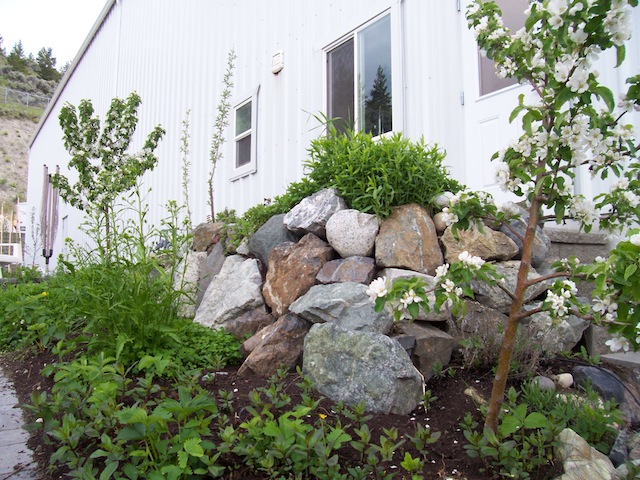
This is my herb garden looking southwest. When I first planted the herb garden, I used a pick axe to make "pots" in the clay and cobble. Look at how much soil has been built up over three years of ranging chickens and turkeys.
A weed is just a weed until its use has been found.
Unknown
In the past, Shaen cared for our household garden. We always had some garden fresh foods and eggs from our backyard flock. In the last few years, Shaen’s focus has been on learning about pasture development and the care of larger animals.
The garden has never been so neglected before. This year I decided that I would take on the work. I would learn about gardening so Shean could focus on more challenging tasks. I’ve learned a number of things about myself this year. I’m not a very enthusiastic gardener. I would rather plant a permanent forest garden or work with pasturing animals. I guess I am more of a herder than a gardener.
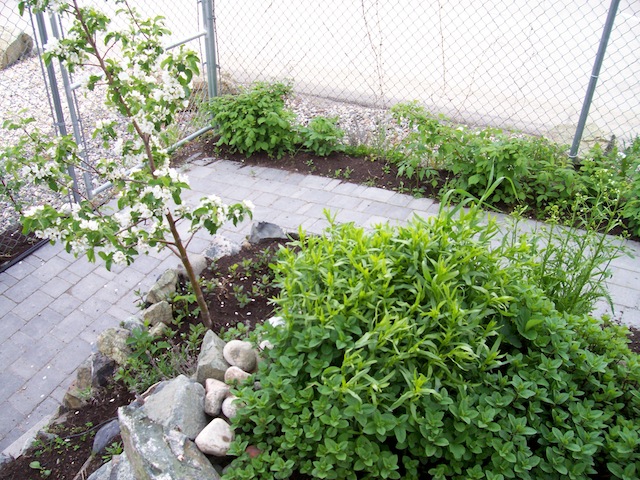
This is my herb garden looking northeast.
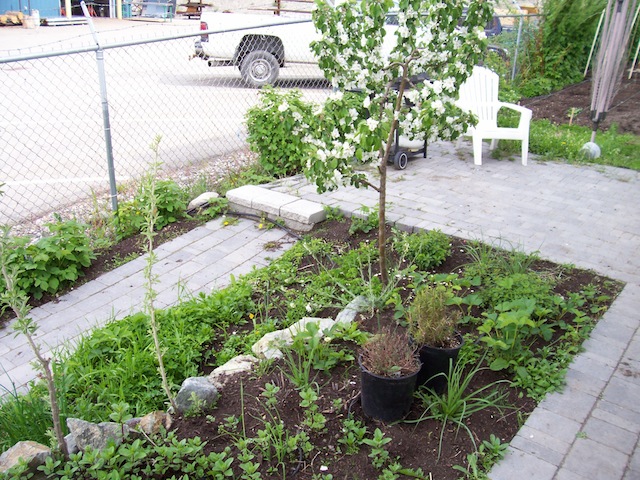
This is my herb garden looking southeast. The total width of the garden is 15 feet and it is right outside my kitchen. Note the clothes line that is illegal in many municipalities. I don't think bylaws like that are very enlightened.
It’s not the work of gardening that I do not like. When I break the surface of the soil for cultivating annuals, I can’t help but wonder what damage I’m doing to the ecology of the soil flora. I notice that the cultivated soil loses its moisture and appears “dead” very quickly.
In Kamloops, mulching cultivated soil is a must. All of these observations have got me wondering how much of our traditional cultivated garden can I convert to permaculture or to a forest garden. If you would like to learn more about forest gardens please read Creating a Forest Garden: Working with Nature to Grow Edible Crops by Martin Crawford. My goal now is to have very small plots of cultivated soil surrounded by large areas of perennial herbs, shrubs and trees. In these small cultivated areas I grow peas, lettuce, beets, carrots, garlic, and onions.
Another area I use traditional cultivation is our hoop-houses. In the winter, the hoop-houses are used for housing the laying hens. In summer, the hens go onto pasture and the hoop-houses are converted to greenhouses. These greenhouses are filled with heavy feeding, heat loving plants like tomatoes, peppers and squash. Every year we move the hoop-houses to new locations to break the pathogen cycle.
I am also trying to make peace with our weeds. Part of this truce is learning about the medicinal and culinary uses of weeds. Some of my new green friends are chickweed, shepherd’s purse, cleaver, plantain, dandelion, and yarrow. The list continues to grow.
I research each new plant that comes into bloom, and more often than not, I find myself adding the weed to my list of friendly plants. I cannot help but marvel at these weeds. They grow where nothing else seems to grow and have an unsurpassed vitality. To the knowledgeable observer, the type of weeds growing in an area can tell us about the state of the soil.
Having animals also makes me value weeds. Animals can take plants I cannot eat and transform them into rich milk, tasty eggs, and flavorful meat. It gets me wondering how many of these “weeds” I can eat or use for my animals.
Part of making peace with weeds is accepting my garden doesn’t look like Butchart Gardens. I have given up my human desire for order and replace it with the chaos of natural system design. It means giving up on one type of esthetic and replacing it with another. This means, along with tolerating the weeds, I am also allowing the “volunteers” to grow up in my garden. Volunteers, are cultivated plants that come up spontaneously and are “naturalized” to the local environment. Sometimes they come up in awkward places. This means I have to use my creativity to work around these plants. I still haven’t given up rows, but I am working on it!

This is my greens garden. I planted beets, carrots and salad greens. I had a fabulous growth of chickweed, dandelion, and nasturiums which are wonderful bitter greens for salads. Way in the back is a chicken hoop house. The chickens live in the hoop house in the winter and go on pasture in the summer.
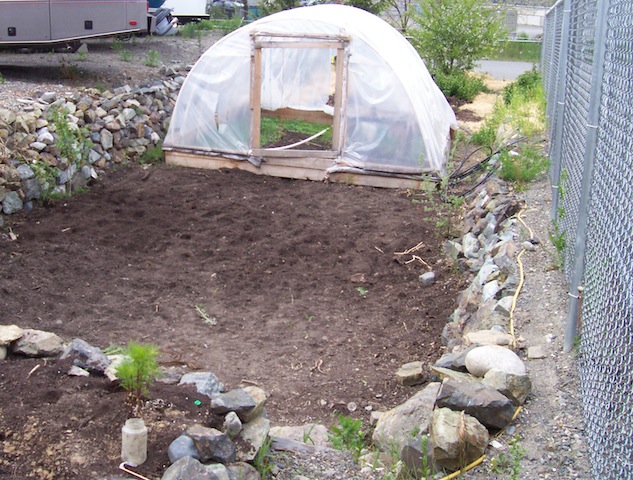
As you can see, hoop houses are not beautiful but they become fabulous greenhouses after a winter of chicken manure. We grow heavy feeding plants like squash and tomatoes in the hoop houses. Note the straw mulch on the potato patch behind the hoop house. We now always mulch any bare soil.
This year, we have added four standard fruit trees to our forest garden. We have transplanted over eighty feet of raspberry canes throughout the garden. I have started a program of growing trees from seed for our forest garden. I am growing walnut and black locust trees. The black locust trees have seed pods that chickens love to eat. I am looking at making cuttings of our currents and spreading these tough plants all over the property. My only rule for planting is the plants must be food for my family or food for our animals, including our wild visitors.
Finally, my herb garden has gone wild. I remember only a few years ago using a pick-axe to dig small “pots” into the rock-hard clay. Four years of compost and animal manure has enlivened a moonscape. My herb garden is the new home for some tadpoles. My daughter Erika saved the tadpoles from a drying-up mud puddle. When the tadpoles mature, we are going to use the toads for insect control in the greenhouses and forest garden.
